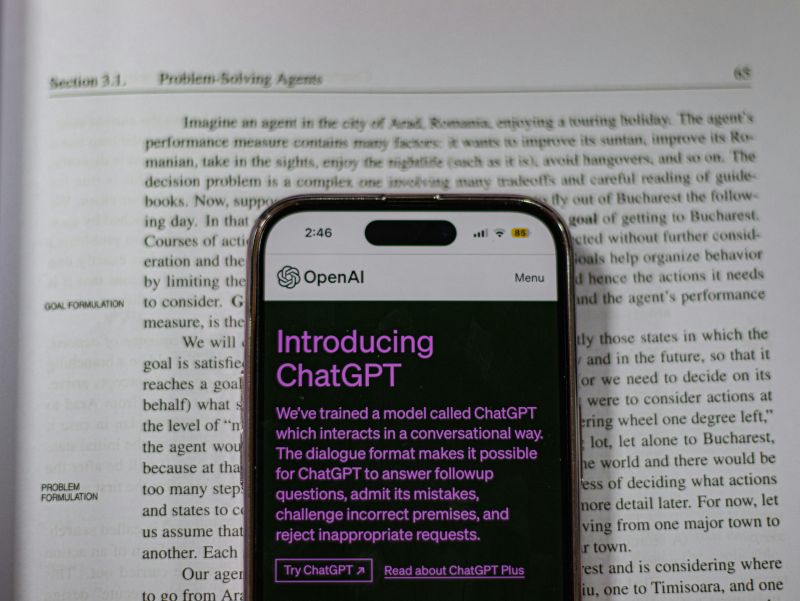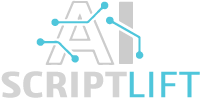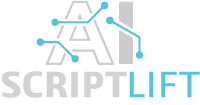
Using AI to Refresh Outdated Blog Content
In the fast-paced world of digital content, keeping your blog posts fresh and relevant is essential for maintaining search engine rankings and engaging your audience. Using AI to refresh outdated blog content has become a game-changing strategy for content creators and marketers alike. By leveraging artificial intelligence, you can efficiently update old articles with current information, improved SEO optimization, and enhanced readability. Our platform, which specializes in generating personalized and interactive AI companions for users, empowers content teams to breathe new life into aging blog posts. With AI-driven content analysis, keyword integration, and tone adjustments, you can ensure your blog stays competitive and continues to deliver value to your readers. Whether you’re aiming to boost organic traffic, improve user engagement, or streamline your content strategy, using AI to refresh outdated blog content is a smart and scalable solution.
Why Updating Old Blog Posts Matters
Refreshing outdated blog content is a powerful yet often overlooked strategy in digital marketing. As search engine algorithms evolve and user expectations shift, older posts can quickly become irrelevant or underperforming. Updating these posts with current information, optimized keywords, and improved readability not only enhances user experience but also boosts SEO performance.
According to HubSpot, companies that update and republish old blog posts can increase organic traffic by up to 106%. This is because search engines favor fresh, relevant content. By integrating AI tools, businesses can efficiently identify outdated information, suggest keyword improvements, and even rewrite sections for better clarity and engagement.
“Content decay is real. If you’re not updating your blog posts regularly, you’re leaving valuable traffic and leads on the table.” — Neil Patel
AI-driven content optimization tools can analyze performance metrics and recommend updates that align with current trends and search intent. This ensures your content remains competitive in search rankings.
For example:
- Rewriting a 2018 blog post on SEO trends to reflect 2024 best practices.
- Adding new statistics or case studies to a previously published marketing guide.
- Incorporating multimedia elements like infographics or videos to enhance engagement.
To explore how AI is reshaping digital content, visit our blogs section or read about the benefits of AI in digital content strategy. For deeper insights into AI’s role in SEO, check out AI: The Future of SEO.
For further reading on content optimization, visit: https://moz.com/blog/why-you-should-update-old-blog-posts.
How AI Identifies Outdated Content

Artificial Intelligence plays a pivotal role in identifying outdated blog content by analyzing various data points and performance metrics. AI tools can scan through large volumes of content to detect declining traffic, reduced engagement, or outdated keywords. These systems use natural language processing (NLP) to assess the relevance and accuracy of information, flagging content that no longer aligns with current trends or user search intent.
By evaluating SEO performance indicators such as bounce rates, click-through rates, and keyword rankings, AI can pinpoint which articles need updating. It also compares your content against top-performing competitors to highlight gaps in information or structure. This enables businesses to prioritize updates that will have the most significant impact on visibility and user experience.
Moreover, AI can identify broken links, outdated statistics, and obsolete references, ensuring your blog remains authoritative and trustworthy. Integrating AI into your content strategy not only saves time but also enhances the overall quality of your digital presence. For more insights into how AI is transforming the way businesses manage their blogs, explore our article on streamlining business blogging. You can also visit our blogs section for additional resources on leveraging AI for content optimization.
Tools and Platforms That Use AI for Content Refresh

Several advanced tools and platforms now harness the power of artificial intelligence to streamline the process of refreshing outdated blog content. These AI-driven solutions analyze existing articles, identify areas that need updates, and suggest improvements based on current trends, SEO best practices, and user intent. Tools like Jasper, Copy.ai, and Surfer SEO are widely used for content optimization, offering features such as keyword enhancement, tone adjustment, and readability improvements. They help ensure that your blog posts remain relevant, engaging, and aligned with search engine algorithms.
In addition to standalone tools, integrated platforms like HubSpot and MarketMuse use AI to provide content audits and strategic recommendations. These platforms evaluate your content library, highlight underperforming posts, and guide you on how to refresh them for better visibility and engagement. By leveraging such technologies, businesses can maintain a consistent and effective content strategy without starting from scratch.
For a deeper understanding of how AI is transforming digital content, explore our detailed insights on AI in digital content strategy and discover why AI is essential for business blogging. These resources highlight the growing importance of AI in maintaining a competitive edge in content marketing. Embracing these tools not only saves time but also ensures your blog content remains impactful and up-to-date.
Steps to Refresh Blog Content Using AI
Refreshing outdated blog content using AI involves a strategic, step-by-step approach that enhances both relevance and search engine visibility. Start by identifying underperforming blog posts through analytics tools, focusing on those with declining traffic or outdated information. Next, use AI-powered tools to analyze keyword trends and suggest updated, SEO-friendly keywords that align with current user intent.
Once keywords are identified, AI can assist in rewriting headlines, meta descriptions, and body content to improve clarity, engagement, and search rankings. Tools like natural language processing (NLP) help ensure the tone and structure remain consistent with your brand voice. Additionally, AI can recommend internal linking opportunities to boost SEO. For example, linking to resources like digital content strategy or content creation can enhance user experience and site authority.
Incorporate multimedia elements such as updated images, infographics, or videos suggested by AI to make the content more engaging. Finally, schedule regular audits using AI tools to keep your content fresh and aligned with evolving trends. This proactive approach not only improves your blog’s performance but also strengthens your overall digital presence. For more insights and updates, explore our latest blog posts.
Enhancing SEO with AI-Driven Updates

Artificial Intelligence is transforming how businesses approach search engine optimization, especially when it comes to updating outdated blog content. By leveraging AI tools, marketers can analyze existing articles, identify gaps in keyword usage, and implement data-driven improvements that align with current SEO trends. This not only boosts visibility on search engines but also enhances user engagement by delivering more relevant and timely information.
AI-powered platforms can scan large volumes of content to detect underperforming posts and suggest updates based on real-time search data. These updates may include optimizing meta descriptions, refining headings, and integrating trending keywords—all of which contribute to improved rankings. Additionally, AI can help maintain consistency in tone and style, ensuring that refreshed content aligns with your brand voice.
Incorporating AI into your content strategy also allows for continuous improvement. As algorithms evolve, AI tools can adapt and recommend new strategies to keep your blog competitive. For more insights on how AI is reshaping digital marketing, explore this article. You can also visit our blogs section for a broader look at how AI is revolutionizing content management and SEO practices.
By embracing AI-driven updates, businesses can ensure their blog content remains fresh, relevant, and optimized for both users and search engines.
Common Mistakes to Avoid When Using AI for Content Updates
When using AI to refresh outdated blog content, it’s easy to fall into common traps that can hinder your content’s performance and credibility. One of the most frequent mistakes is relying too heavily on AI-generated text without human oversight. While AI can streamline the process, it may produce generic or inaccurate information if not properly guided. Always review and edit AI outputs to ensure they align with your brand voice and factual accuracy.
Another pitfall is failing to update SEO elements. Simply rephrasing content isn’t enough—ensure that keywords, meta descriptions, and internal links are optimized for current search trends. For example, integrating updated internal links to relevant resources like digital content strategy or AI in SEO can significantly boost your blog’s visibility.
Additionally, overlooking the importance of user intent can lead to content that misses the mark. AI tools may not fully grasp the nuances of your audience’s needs, so it’s crucial to tailor updates with your readers in mind. Avoid keyword stuffing and focus on delivering value through clear, concise, and relevant information.
Lastly, don’t ignore performance tracking. Monitor how updated posts perform and adjust your strategy accordingly. For more insights and best practices, explore our blogs to stay ahead in the evolving landscape of AI-driven content marketing.
Measuring the Impact of AI-Refreshed Content
To truly understand the value of using AI to refresh outdated blog content, it’s essential to measure its impact through key performance indicators (KPIs). Metrics such as organic traffic growth, bounce rate reduction, time spent on page, and improved search engine rankings provide tangible evidence of AI’s effectiveness. By comparing these metrics before and after implementing AI-driven updates, businesses can gauge how well the refreshed content resonates with their audience and search engines alike.
Another critical factor is engagement. AI-enhanced content often includes updated keywords, improved readability, and more relevant information, which can lead to increased user interaction and social sharing. Monitoring comments, shares, and backlinks can help determine whether the content is meeting user expectations and driving meaningful engagement.
Additionally, AI tools can help identify which pieces of content are underperforming and suggest targeted improvements. This data-driven approach ensures that your content strategy remains agile and responsive to changing trends. For a deeper dive into how AI is transforming content strategies, explore our article on the benefits of AI in digital content strategy.
To stay ahead in the competitive digital landscape, it’s crucial to continuously evaluate and refine your content. Learn more about how AI is shaping the future of SEO and content marketing by visiting our blogs section.
In conclusion, leveraging AI to refresh outdated blog content is a smart and efficient strategy for keeping your website relevant, engaging, and SEO-friendly. By using AI tools to identify outdated information, suggest updates, and even enhance readability, content creators can save time while maintaining high-quality standards. As search engines continue to prioritize fresh and accurate content, integrating AI into your content strategy not only boosts your visibility but also ensures your audience receives the most up-to-date and valuable information. Embracing AI is not about replacing human creativity—it’s about enhancing it to stay ahead in the ever-evolving digital landscape.

